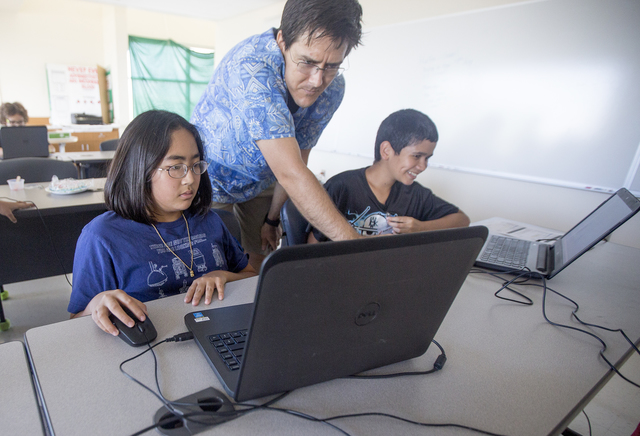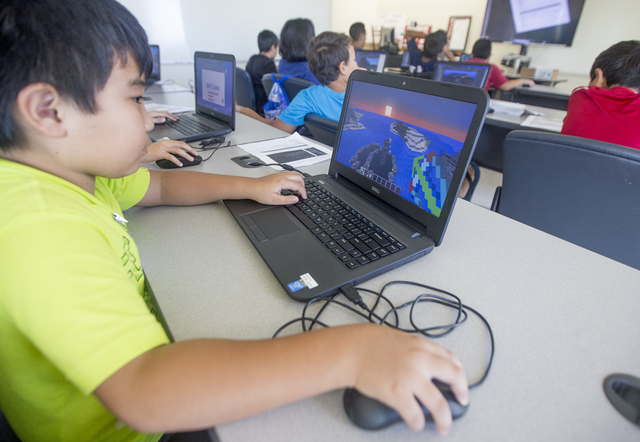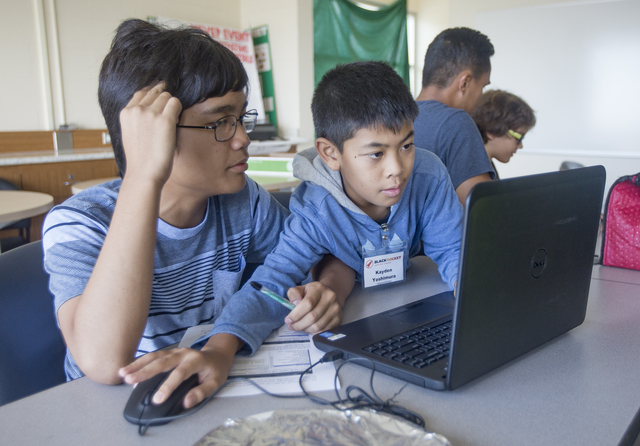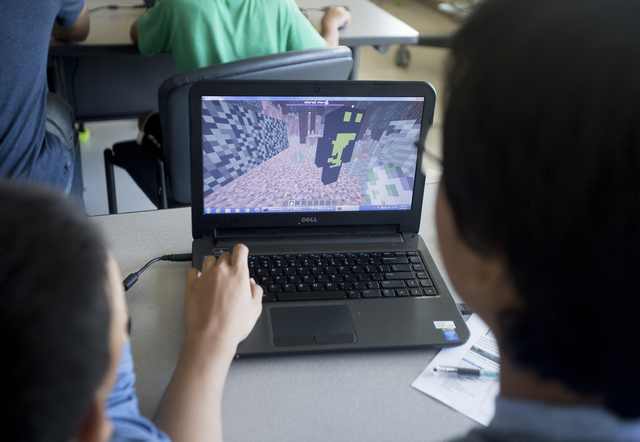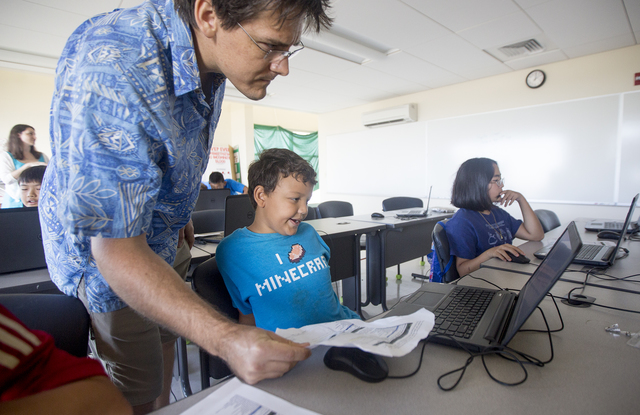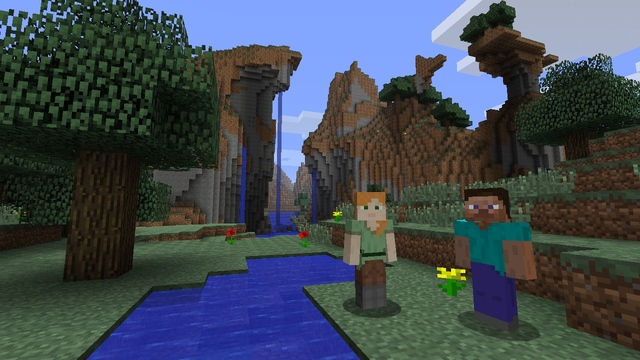Emily Sakamoto was immersed in a world of virtual blocks and pixelated, 3-D landscapes. ADVERTISING Emily Sakamoto was immersed in a world of virtual blocks and pixelated, 3-D landscapes. In that world, she was creator of a bow so powerful
Emily Sakamoto was immersed in a world of virtual blocks and pixelated, 3-D landscapes.
In that world, she was creator of a bow so powerful it could shoot 30 arrows at once. And she was the brains behind elaborate cubic structures ranging drastically in size and appearance.
It wasn’t the real world — it was the procedurally generated world of Minecraft, a wildly popular “sandbox” video game, meaning players have free range to build, explore and create. This summer, more than a dozen youth became designers and “modders” — a term for those who create custom components to change the traditional game — as part of a first-ever Minecraft youth program at Hawaii Community College.
“It’s freeing,” said 12-year-old Sakamoto. “And it’s fun. You can go into survival mode or you can go into creative mode and build. It gives you more freedom than most stuff.”
The two weeklong classes were offered through New Jersey-based company Black Rocket Productions, alongside the college’s array of traditional Summer Youth Academy classes.
About 100 children of different ages sign up each year for the summer enrichment classes which this year included cake decorating, an introduction to farm life and a course about digital scrapbooking.
“We’re always trying different things with classes for Summer Youth Academy,” HCC program coordinator Estee Nathanson said. “We want them not just to play, we want them to learn and try things out that are innovative and challenging. That’s what Summer Youth Academy is — you don’t necessarily have to follow the curriculum like you do in school.”
Minecraft was offered this year in response to its popularity, Nathanson said. Minecraft is among the best-selling games of all time with nearly 107 million copies sold since its 2011 release and about 53,000 copies purchased each day so far in 2016.
Most of the HCC youth had played Minecraft before, many on console devices or smartphones. The class, however, aimed to take things to another level.
Students in the first session — “Minecraft Designers” — custom-created their own worlds, instructor Chester Lowrey said. They created varying 3-D characters and buildings, among other things, and then imported and tested them in actual game play.
The second session — “Minecraft Modders” — took things a step further. The class tasked students to design changes and new elements to that world. Along the way, they got a crash course in introductory coding and scripting.
“When you’re just playing the game, you’re just one-way interacting with it,” Lowrey said. “When you’re actually creating something like this, you’re realizing how it’s created and you kind of get a more in-depth understanding of what it’s like to be a programmer. It’s a more in-depth understanding of how the computer works, too.”
Close friends Connor Gonzalez and Justin Imamura, both 10, signed up for the Minecraft class after years of tinkering around on the game on their iPads. Both agreed modding and designing was more challenging than standard game play.
“It’s the first time I’ve ever tried it on a computer, and it’s totally different,” Gonzalez said. “On the computer, you can play stuff you can’t do in normal Minecraft. We learned how to code, how to draw things and let our ideas go onto what we wanted to create.”
Email Kirsten Johnson at kjohnson@hawaiitribune-herald.com.


